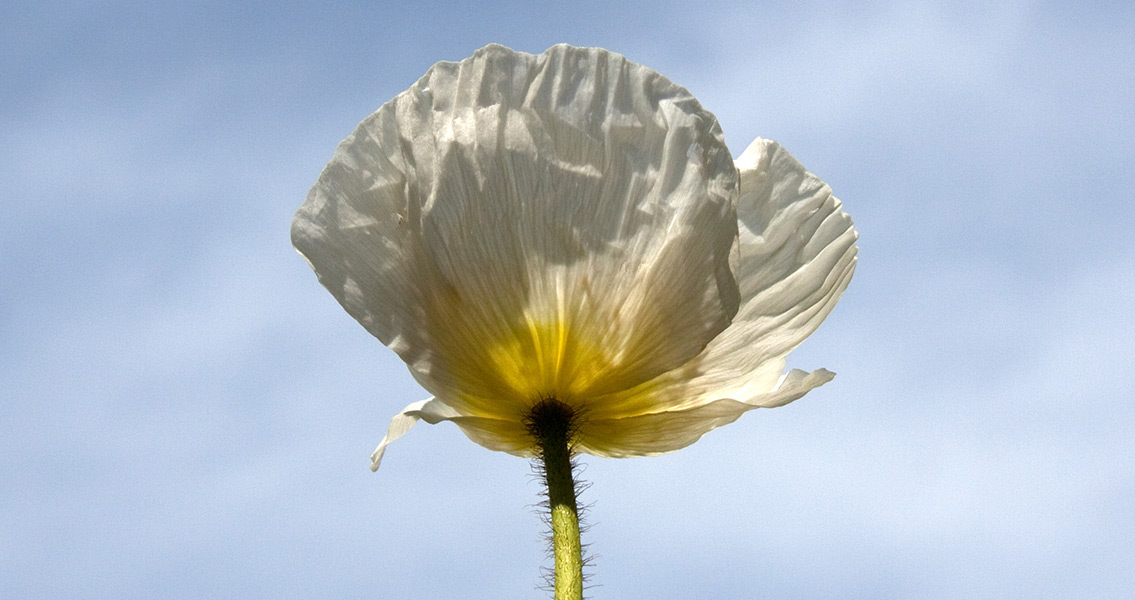<![CDATA[The controversy over whether Jeremy Corbyn showed sufficient respect to Britain's war dead at the cenotaph on Sunday (8th November) highlights that more than a hundred years after the outbreak of the First World War, the symbolic gestures we make to acknowledge those who have died in military conflicts are deeply political statements. Red poppies are generally considered in the UK and the Commonwealth as a sign of gratitude to the sacrifices made by armed forces personnel in all conflicts. Moving beyond the media frenzy over posture, the red poppy was an ubiquitous sight at the cenotaph on Sunday, and will be worn by many up until 11th November. With Remembrance Day celebrated on 11th November - the anniversary of the First World War ending Armistice, the poppy is often associated with that conflict in particular, although its connection with war dates all the way back to the Napoleonic Wars, when poppies grew in land which had been devastated by battle. Following the destruction of the First World War, the Canadian Military surgeon John McCrae immortalised the image of poppies blooming in war torn fields in his poem 'In Flanders' Fields'. In 1921 its image was adopted by the Royal British Legion as the symbol of a campaign to provide aid for soldiers serving in the British armed forces. Since then the red poppy has become closely tied to commemorating the casualties of war, and raising funds for wounded soldiers and their families. Controversies over the use of the flower quickly ensued, particularly in 1929 when the No War Movement launched a campaign to have the red poppy removed from any association with military culture, instead making it a symbol purely for peace. The justification for this outlook was that the poppy should deter future conflict, as well as commemorate the victims of past wars. In many ways it laid the framework for the debate about what exactly a poppy symbolises, one that continues to this day. Is it a mark just to remember the fallen soldiers from commonwealth countries, or is it a tribute to all of the victims of wars, and a warning that more effort should be made to prevent them happening again in the future? The arrival of the White Poppy Movement in 1933 seemed to cement the polarisation, and politicise the poppy even more. Members of the Women's Co-Operative Guild started to wear the white poppy to symbolise their objection to violence and war. Founded in 1883 as a means to deal with issues of home and family, the Guild turned its attention to broader concerns in 1914 with the onset of the First World War, its congress declaring, "civilised nations should never again resort to the terrible and ineffectual method of war for the settlement of international disputes". Shocked by the devastation on family life wrought by the First World War, the Guild launched an active campaign for peace. Money raised from the sales of white poppies, which were worn on Armistice Day, were sent to conscientious objectors and war resistors throughout Europe. Increasingly, the white poppy became a symbol of pacifism. In 1936 it was adopted by the Peace Pledge Union, today Britain's oldest secular pacifist organisation. In 1938 a pacifist religious service was held in Regent's Park, London, followed by a wreath of white poppies being laid at the cenotaph. After the outbreak of the Second World War, and in that conflict's aftermath, the white poppy seemed to disappear from public view. It started to gather momentum again in 1980, when a silent procession once more laid a wreath of white poppies at the cenotaph. A sign of just how controversial the movement had become came later in the eighties, when Margaret Thatcher referred to the White Poppy as "a despicable little symbol." White poppies are now sold in Australia, New Zealand, and Canada. The difference between the symbolism of red and white poppies is small, but crucial to many. The red commemorates dead soldiers, which the white also does, while at the same time explicitly advocating for the wars that cause such tragedy to stop being fought. Image courtesy of Wikimedia Commons user: Tony Hisgett]]>
Remembrance Day and The History of Red and White Poppies
